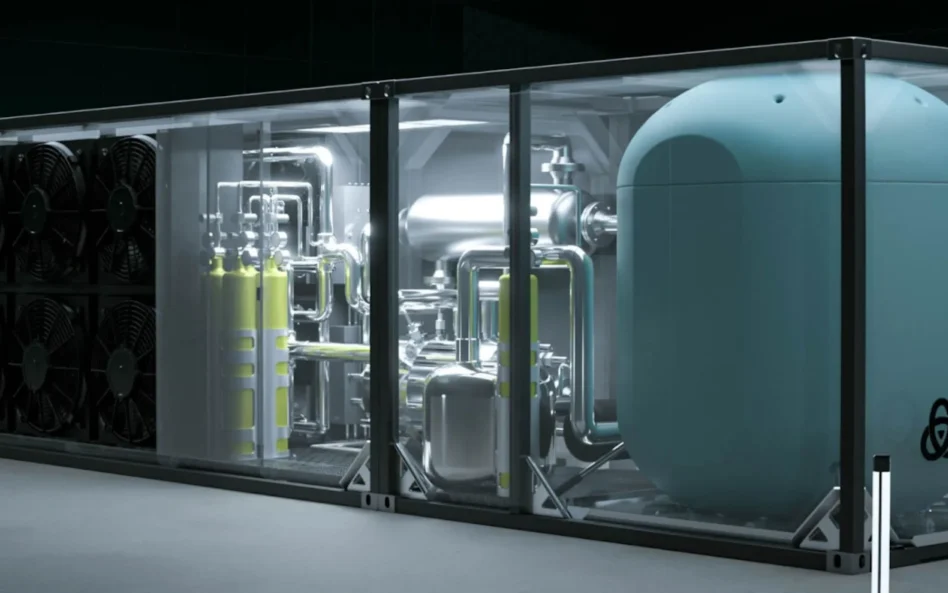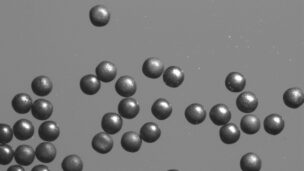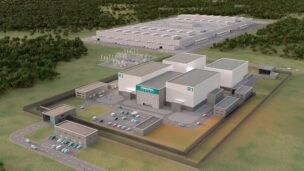There’s a large cohort of advanced nuclear companies rushing toward a deadline—less than a year away—to turn on a reactor for the first time. On every metric, Radiant wants to be first.
Radiant’s Chief Nuclear Officer Rita Baranwal has been into nuclear fission for her whole career, from lab work, to industry, to the DOE and back to industry. She sat down with Ignition to discuss how things have changed and what it means to be the first to get new technology out there.
Note: This interview has been edited for length and clarity.
Ignition: What was it that first got you interested in nuclear energy, and what keeps you working in the sector?
Baranwal: My degrees are all in materials science and engineering, and my first job out of graduate school was actually with Bettis Atomic Power Laboratory. Their mission is to design, develop and maintain the US Navy’s nuclear-powered submarines and aircraft carriers, and I was hired to help develop advanced nuclear fuel using my materials background. I was selected—or voluntold—to drive a van full of summer interns down to Newport News shipyard. And really the “aha” moment for me, what clinched it for me, what keeps me in this industry, was during that visit, I was able to see the Ronald Reagan aircraft carrier being constructed, and I stood inside where the reactor compartment was going to be, and I looked up several stories, and I thought to myself, “What I am developing back in my little lab in Pittsburgh, that fuel, is going to power this behemoth of a ship and help defend my country.”
The energy density that nuclear power provides from uranium, and the reliability it provides, and the longevity of power that it provides is what keeps me in this industry. I’m here because of all of those benefits, plus, there is such a huge demand for power, not only in this country but around the world. To be able to be in an industry that has the capability to elevate everyone around the world to a level of prosperity that we all here in this country tend to enjoy is really part of my life mission.
What does the world stand to gain from the widespread deployment and commercialization of advanced nuclear technology?
It’s reliable power that they can enjoy. It is power that we can provide, especially with Radiant’s technology, and we’ll get into that, but that we can provide to communities that, at the moment, rely on wood or coal or diesel. There’s no one energy source, to be clear. There’s no one energy source that is free of warts, but there are benefits to nuclear that we can look to and, for example, with Radiant, we are looking to replace diesel gensets as one application.
In the time since you were serving as assistant secretary for nuclear energy at the DOE to today, which is about five or six years since the beginning of that period, what have you seen shift in the commercial advanced nuclear sector?
one of the things that I’m most proud of during my time at DOE is my team and I deployed the Advanced Reactor Demonstration Program, and I think that was the kickstart that the industry needed to start having confidence around different technologies compared to what is currently operating in the United States and around the world. Between 2019 and today, what has happened is we have looked to collaborate on various technologies, the various coolants and the various fuels that are needed for advanced reactor success, including high assay, low enriched uranium.
And today, a couple things have happened along the way. So certainly, we laid the groundwork for assessing what is needed for advanced reactors to be successful. But then very recently, in the grand scheme of things, you have this huge uptick in power needs from the tech community. So hyperscalers, data centers, that need is there. The advanced reactor community can’t just turn it on today. I love the story of Microsoft and Constellation and Three Mile Island, because they’re planning to reinvigorate and restart a plant that was shut down just for economic reasons, and use all of that power, the 800 plus megawatts, for themselves. So using large scale nuclear reactors for that application is something that none of us could have seen 30 years ago.
You’re quoted as saying that you joined Radiant because of its clarity of mission. I’m curious to hear from you how you see that mission, and how you contribute to it.
That mission is to deploy a mass produced microreactor. So our design is a three megawatt thermal, one megawatt electric, high temperature gas reactor that is fueled by TRISO. I like to call it a megawatt in a box. But that mission helps everybody in the company focus on what we are doing. That hyper focus on delivering on that mission is very exciting. That’s number one. Number two, early on, when I visited Radiant, I was very impressed with the quiet drive that everybody in the company had. They weren’t a very splashy company. We didn’t necessarily see them in the headlines all the time. Now, these past few months have been different.
I’ve written a few headlines myself.
It was just the drive that the team had, and now has, because I’m part of it is something that I wanted to be a part of. My second point was the entire industry, and I think more so the end users, are watching the new technologies and watching the developers, and they want to subscribe and be the second, third or fourth taker. No one wants to be the first, and Radiant is willing to be the first. And I want to be part of that team that goes first.
The piece that is intriguing to me is that after, as we go and we deploy and we’re first, it unlocks a lot of options in the supply chain. It unleashes positive opinions about nuclear. It opens up the dialog around, “Oh, it wasn’t that hard.” Now, it’s going to be difficult, but it doesn’t necessarily need to take years and years, and that’s the beauty of having a smaller reactor, is that the timelines to deployment are shorter because the output is shorter, so everything is smaller. And ideally, hopefully, the timelines do get faster as we shrink the size. And then with the mission to mass-produce, absolutely, things will get faster.
That push to be first feels very strong from Radiant. What would it mean for Radiant in this landscape of advanced reactor companies to be first to deployment?
I have always been wired to do things a little differently, so it is really nice to be surrounded by people at Radiant that not only are similarly wired, but have this mission to deploy our reactor, and they’re looking at what has encumbered the industry in the past, and how we need to do things differently so that we also don’t get bogged down. As a company that was only founded five years ago, it’d be very exciting to say, “Hey, you don’t have to have been one of the big dogs in the company in this industry who had been around for 50 years to deliver success. It can be done and it can be done differently.” I think that philosophy and that drive and that mission coupled with the direction that the current administration the United States is taking is a perfect match. The executive orders that have been issued on nuclear by the president have been very complimentary to the way that Radiant had wanted to operate and continues to operate.
It’s very serendipitous. But I will also say that it’s not just luck. It takes a lot of courage to speak up and speak out about what needs to change in the industry, and the leadership at Radiant prior to me had done that, and sometimes agencies listen, sometimes they don’t, but I feel like the feedback and the input that we as a company, again, prior to me, in some cases, had been providing to those that were asking for feedback in the administration. They digested it, and they implemented some of it, and almost all of it has been favorable such that we are going to be able to deploy quickly like we want to. The regulatory reform that we are seeing come out, both from the NRC and we are anticipating changes within DOE as well, will be favorable to microreactors. Specifically, to Radiant, it’s like the stars have aligned.
What changes are you seeing at the DOE under this administration that impact Radiant?
So for example, the call for applicants who wanted to go into DOME. There was a recent application process. They turned that around very quickly, and they made those announcements in record time. And the HALEU allocation contract that was just signed with DOE and Radiant, I think those that have worked with contracting at DOE would say that that was done remarkably quickly.
It’s a partnership. It takes dialog, it takes feedback, it takes iteration. So Radiant has a very proactive posture in almost everything that we do. And so we take a little bit of the credit in terms of making sure that contracting is moving at as fast as possible. If there’s questions then we work through those questions. If there are points of compromise that need to be made, we work to get to a point that’s mutually beneficial.
What do you think are the hazards or risks in being the first to reach criticality, first to deployment, first to market? What are the risks associated with standing alone at the front of the pack?
In any endeavor, you want to make sure you have security in supply of all of your components. We are a very niche market, and we have very stringent requirements for certain components in terms of the quality levels that are required. So making sure that we not only have a primary supply chain, but that we have secondary suppliers, and in some cases, tertiary suppliers for some of our components is very, very key. So our supply chain organization has been working on that and been very successful. There are some components of our reactor that are almost boutique products, if you will. They’re very niche products, but I’m really proud of the supply chain team, and they have found the right suppliers that can deliver the quality and requirements that we have for our design. The risk, it’s a very timely question coming at this point in the summer, is that the lead time for some of these items was already quite long. If they are products that are impacted by tariffs, then we need to consider not only the lead time, but, of course, the price as well.
Lead Reporter of Ignition





